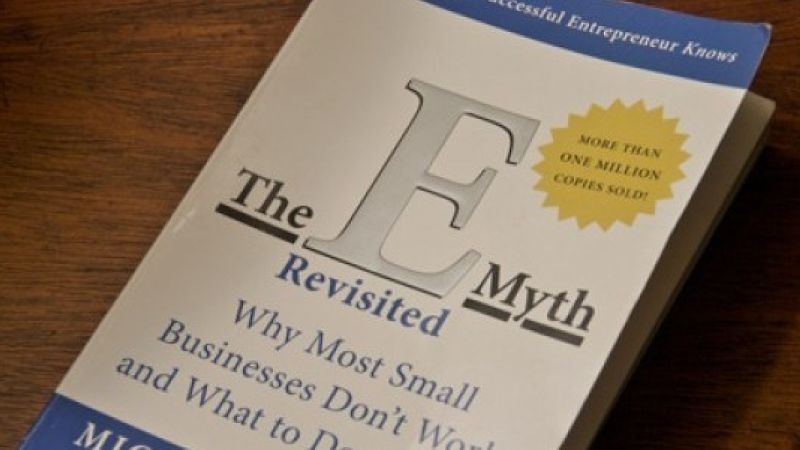I’ve always been aware of this book and its popularity, but for some reason I have never put it in my to-read list. This was until I was describing my recent journey of business growth to two separate people on separate occasions within days of one another, and they both recommended I read it. So of course I did.
Gerber uses a mix of parable narrative and well written theory that work very well together to enhance understanding. Essentially, The E-Myth (The Entrepreneur Myth) is that most businesses are started by Entrepreneurs who want to build a huge business. This is not the case in the majority, rather, most businesses are started by people good at producing their product (technicians) and therefore focus on producing the products and the minimum operational requirements to make this viable. This is a fatal tendency.
Instead, The E-Myth Revisited urges us to look not on the one-off operations of the business, but on the systems and processes, and where we want the business to be in the future. Systems and controls plus a vision of how the business can create sustainable and increasing value to its stakeholders.
Therefore, a business that is managed by a combination of roles, the technician, the manager, and the entrepreneur will have a far greater chance of success than one built by a technician alone.
Phases of Growth
Here is where the book really sung to me. Building on the fundamental concepts mentioned above, businesses generally go through three phases of growth:
- Infancy – where the technician is everything
- Adolescence – where better management skills are required
- Maturity – where the entrepreneurial vision is needed
For myself, I can see this in my own business journey. Possessing both the technical and operational skills required by my business, working as a sole trader, I had been spending too much time on the tools. More recently, I have been able to expand the business, grow into adolescence, to allow myself more time for managing rather than producing. I can see clearly thanks to this book, what is required next to move into further expansion, and growth into maturity.
The book uses the E-Myth principle and applies it to the business model. Using the well-worn biz-speak trope of “working on the business rather than in it”, Gerber forces you (the reader) to look at your business as a prototype that can be franchised or easily replicated. Why? Because if it can, it doesn’t need you as much. This frees up your time as a manager and/or entrepreneur to work on business development and building the vision.
The Business Model
Gerber applies the E-Myth principle to the business development process. There are three activities: innovation (new ideas), quantification (measurement and analysis), and orchestration (putting things in action and embedded processes). It then details the processes and people required to structure the business for success. These cover planning, management, resources (human, tangible, and intangible), marketing, and systems.
I can see now why the E-Myth is often referred to as an essential read for every business person. It is clear, concise, entertaining, and very practical. A resource to rely on in your business book shelf, and to revisit as you navigate your own growth journey.
If you are interested in the concepts and would like to have a chat about how they might apply to you and your business, please get in touch.




